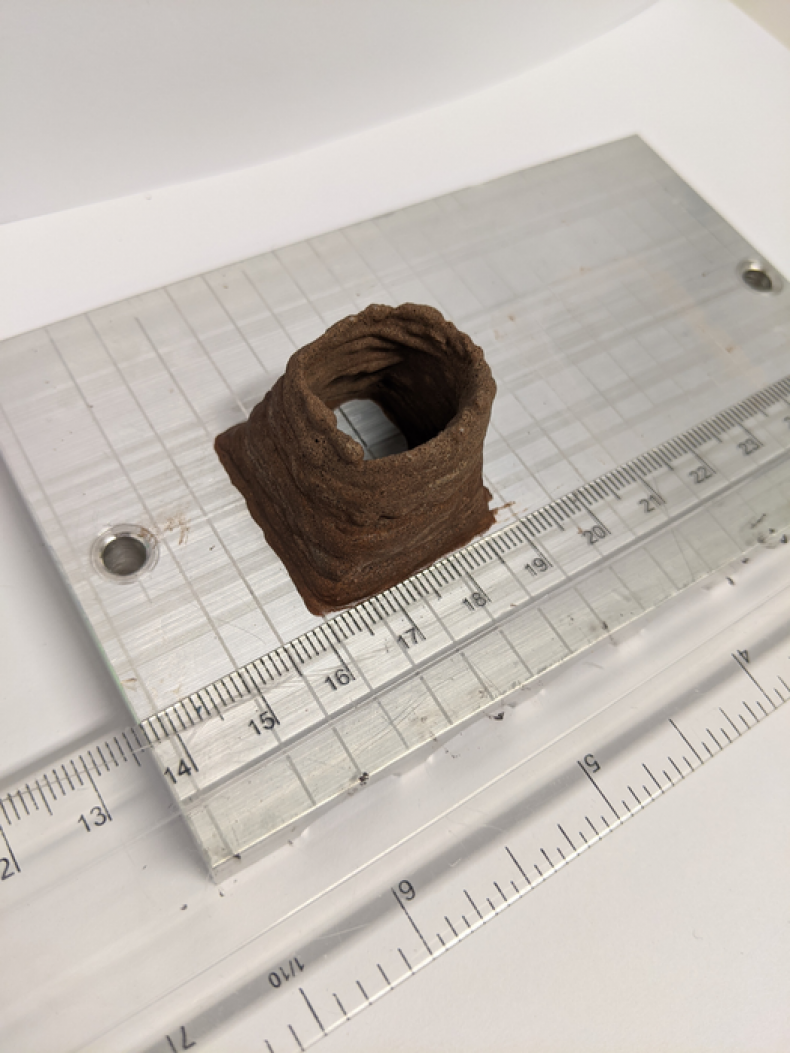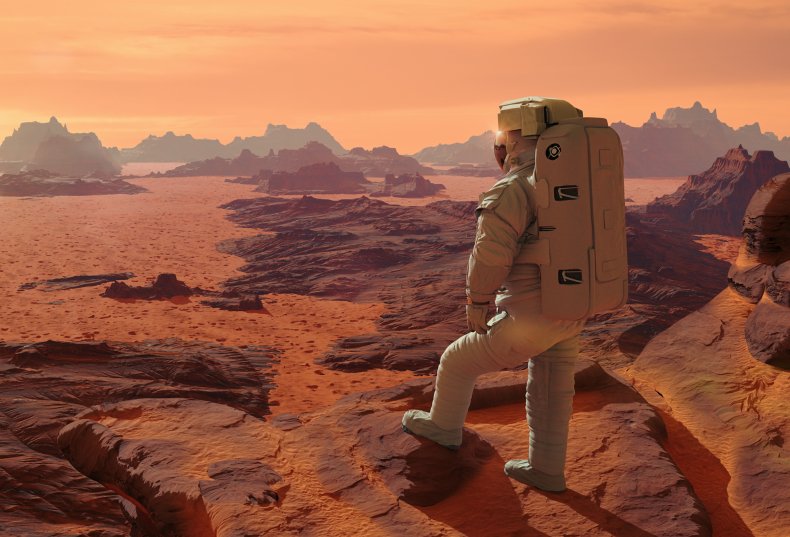Researchers have created a building material that could be made in space from space dust and astronauts’ bodily fluids such as blood, sweat, and tears.
Source: Newsweek
A team at the University of Manchester, U.K., developed the concrete-like material as a way to overcome the expense and logistical problems associated with transporting building materials to space.
If humanity is to ever build a habitat on the surface of the Moon or Mars, a building material that can be created in-situ is vital. This is empathized by the fact that in 2017 engineering magazine Structure estimated that it would cost $2 million to transport just one brick to the surface of Mars.
This means that potential Mars colonists will likely have to make use of the materials already on the surface of the Red Planet to construct shelter and other vital facilities.
The team described the process used to create the substance, which they have dubbed “AstroCrete,” in a study published in the journal Materials Today Bio.
“Scientists have been trying to develop viable technologies to produce concrete-like materials on the surface of Mars, but we never stopped to think that the answer might be inside us all along,” lead author and University of Manchester researcher Aled Roberts said in a press release.

The team discovered that a common protein found in human blood plasma, known as human serum albumin, has the potential to bind together dust found on the Moon, or on Mars.
“We were previously looking at synthetic spider silk as a bio-based glue, and through chance discovered that a protein from blood works even better,” Roberts told Newsweek. “We found the glue worked really well on glass, so we inferred that it should also stick together sand since they are both made of the same stuff, silica.
“From there, we inferred that it should also be able to stick moon and Mars dust together since they are also primarily comprised of silica.”
The mixture produces a concrete-like substance with resistance to compression that is similar to the concrete we use in building projects here on Earth. The team then went further, adding other bodily fluids into the mix.
The scientists found that urea, a waste product that we excrete in urine, sweat, and tears, could be added to AstroCrete to boost its compressibility strength by as much as 300 percent.
That means that the best performing AstroCrete the team tested was substantially stronger than the concrete currently used on Earth.
In the study, the researchers calculated that six astronauts on a two-year mission could create around 1,200 pounds of high-strength AstroCrete. Each member of the crew, the researchers say, could create enough material to support an extra crew member. This means facilities could be created on one mission that allows successive missions to be doubled in size.
“The material could be useful in space since there is no other easy way to make construction materials like bricks or concrete,” Roberts said. “The next-best concrete-like material you could feasibly make on Mars would require heavy mining, transportation, and processing equipment, and it would consume large quantities of energy and water.
“Our technique, on the other hand, is much simpler as it wouldn’t need such equipment or large quantities of energy and water.”
The researcher also told Newsweek that the next steps for the research include investigating synthetic spider silk proteins as a binder instead of human blood. The team will then also look into plant-based proteins as binders since, which Roberts says are “more feasible than blood.”
Whilst AstroCrete is a space-age material, the team says its inspiration can be dated back to medieval times when our ancestors mixed animal blood into building materials.
“It is exciting that a major challenge of the space age may have found its solution based on inspirations from medieval technology,” Roberts said in the release. “The concept is literally blood-curdling.”

Source: Newsweek

































Leave a Comment
You must be logged in to post a comment.